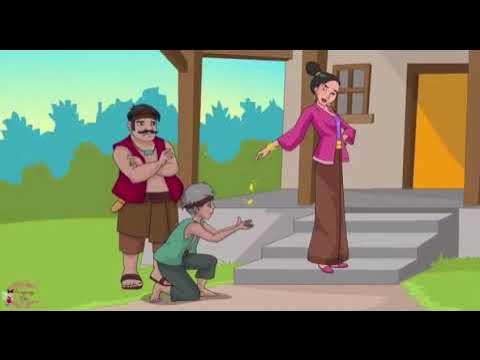Dongeng Sasakala Kalapagenep || Ghaitsa Haurani A. || X MIPA 3
Summary
TLDRThis video script presents a storytelling performance that blends music and narration, recounting a traditional tale titled 'Sasakala Kalapa.' The story is set near the Cemedang River, where an elder, known as Aki-aki, lives in a modest house. The plot revolves around his daily life, the harvesting of coconuts, and his solitary existence. The narrative also touches on the elder's role in the local community and highlights the transformation of the surrounding area over time. The story ends with a respectful farewell, as the narrator expresses gratitude to the audience, acknowledging the cultural significance of the tale.
Takeaways
- 😀 The script opens with a greeting: 'Assalamualaikum warahmatullahi wabarakatuh,' a common greeting in Islamic culture.
- 😀 The storyteller introduces themselves as a student from class 10 MIPA and begins telling a story.
- 😀 The title of the story is 'Sasakala Kalapa,' which seems to be a traditional or folk tale.
- 😀 The setting of the story is near a river, specifically by the 'Cemedang' river.
- 😀 The story involves an old man (referred to as 'Aki-aki') who lives in a house by the river.
- 😀 The old man is depicted as someone who dries fish ('lauk') as part of his daily activities.
- 😀 There is a reference to 'kalapa' (coconut), which plays a role in the narrative, possibly as a tool or symbol.
- 😀 The story describes a process involving the old man using a coconut in various ways, including as part of his work.
- 😀 The old man is noted as being single ('jomblo'), indicating a possible theme of solitude or independence.
- 😀 The story ends with a reference to a location, 'Cikalong Belah Wetan,' which is near the border of Ciamis, and the storyteller thanks the audience, signing off with 'Wassalamualaikum warahmatullahi wabarakatuh.'
Q & A
What is the setting of the story in the transcript?
-The story takes place near the Cemedang River, where a house is located, inhabited by an elderly man (aki-aki).
Who is the main character in the story?
-The main character in the story is an elderly man, referred to as 'aki-aki' in the transcript.
What does the elderly man (aki-aki) do with the fish?
-The elderly man dries fish by sun-drying them, as mentioned in the script.
What role does the coconut play in the story?
-The coconut seems to symbolize a tool or object that the elderly man uses, possibly in connection with his livelihood or daily tasks.
What happens to the house in the story?
-The house is expanded or widened, as stated in the transcript, to accommodate certain activities.
What is the significance of the coconut tree in the narrative?
-The coconut tree appears to hold significance in the story, particularly in relation to the elderly man's tasks, possibly as a source of coconuts that he collects or uses.
Is there any mention of a specific location in the script?
-Yes, the story takes place in the Cikalong area, East of the West Java region, which is near the border with Ciamis Regency.
What is the emotional tone of the transcript?
-The tone of the transcript feels warm and nostalgic, with a sense of respect for traditions and the life of the elderly man.
How does the story conclude?
-The story concludes with a farewell, thanking the audience and acknowledging any mistakes, followed by a polite closing remark.
What is the overall theme of the story?
-The story seems to explore rural life, tradition, and the daily activities of an elderly man in a small community, touching on themes of work, simplicity, and respect for nature.
Outlines

This section is available to paid users only. Please upgrade to access this part.
Upgrade NowMindmap

This section is available to paid users only. Please upgrade to access this part.
Upgrade NowKeywords

This section is available to paid users only. Please upgrade to access this part.
Upgrade NowHighlights

This section is available to paid users only. Please upgrade to access this part.
Upgrade NowTranscripts

This section is available to paid users only. Please upgrade to access this part.
Upgrade NowBrowse More Related Video

KABARET SUNDA HAYANG KAWIN BARUDAK IPPK

Sinta Bercerita Kepada Trijatha I Ramayana I Drayang (Drama Wayang) Swargaloka

Dongeng Sasakala Situ Bagendit ( Tugas Bahasa Sunda)

DRAMATARI ANOMAN OBONG X AKL 1 II COLAB S.BUDAYA-B. JAWA #smkbisa #smkn1dukuhturi #smkhebat

MAKYONG MUDA REVITALISASI BUDAYA MELAYU 2012 TANJUNGPINANG KEPULAUAN RIAU INDONESIA

SENDRATARI SUGRIWA SUBALI
5.0 / 5 (0 votes)